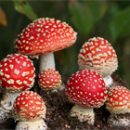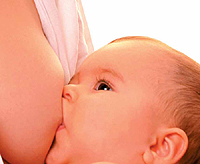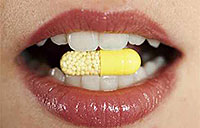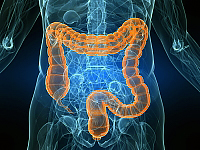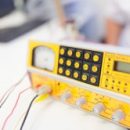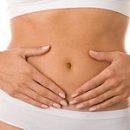What is Reflux Ezophagitis? What are the causes of this disease? How to diagnose and treatment of reflux-esophagitis? Answers to these questions you will find in the article.
Content
In recent years, the number of patients with severe inflammatory processes of the lower part of the esophagus - Reflux Ezophagitis - increased by 2-3 times. For this reason, among the gastroenterologists, there was even a statement that the XX century is the age of peptic ulcer, and XXI - Reflux Ezophagitis.
We can say that this sign - the message of our body about certain problems with digestion. In short «heartburn» generally refer to the feeling of strong burning in the esophagus, which is localized by the sternum. In the overwhelming majority, it appears from the increased acidity of the gastric juice, but sometimes characterized by reduced acidity or even the complete absence of hydrochloric acid in the stomach. The reason for the appearance of heartburn may be the insufficiency of the cardiac sphincter (that is, a muscular ring that covers the lower part of the esophagus at the place of its transition to the stomach). If the sphincter functions normally, its main role is to prevent the receipt of the contents of the stomach in the esophagus. When something «not this way», then any content of the stomach, falling on the mucous membrane of the esophagus, will cause a feeling of heartburn. There are still cases when the heartburn becomes one of the signs of neurosis.
Reflux Ezophagit
This term is called spontaneous, regular dropping into the esophagus of gastric or intestinal content, which leads to damage to the lower esophageal department and the appearance of such symptoms as heartburn, pain and digestion disorders. Under normal conditions in the lower third of the esophagis, the level of acidity of the pH is 6.0 (this can be determined using such a method of examination as an esophageal pH metry). The presence of reflux indicates the value of the pH < 4.0 (acid reflux) or pH > 7.0 (alkaline, bile reflux) in both one and different case irritating the content of the content that throws into the esophagus, causes an inflammatory process of the mucous membrane of the lower third of the esophagus - reflux-esophagitis.
For example, among the US adult population, the frequency of heartburn - the main symptom is 20-40%, but only 2% of such patients are treated on this.
Causes of Reflux Ezophagitis
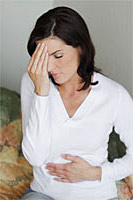 Since the pressure in the stomach is always higher than in the chest cavity, then throwing the contents of the stomach in the esophagus (reflux) should be at all permanent phenomenon. But, thanks to the mechanisms of the cardiac sphincter, it rarely occurs and only for a short time (let's say, twice a day for less than 5 minutes). Therefore, in the norm, such non-losant boiling of the contents of the stomach is not considered as pathology.
Since the pressure in the stomach is always higher than in the chest cavity, then throwing the contents of the stomach in the esophagus (reflux) should be at all permanent phenomenon. But, thanks to the mechanisms of the cardiac sphincter, it rarely occurs and only for a short time (let's say, twice a day for less than 5 minutes). Therefore, in the norm, such non-losant boiling of the contents of the stomach is not considered as pathology.
What is happening in the case of the disease? The insufficiency of the cardiac esophagus is often observed in newborn children. This is due to the immaturity of the nervous apparatus characteristic of this age. Infants often jump out what happens by hitting the gastric contents along with the air out due to the physiological immaturity of the stomach and esophagus. The stomach of kids is similar to the sputtered bottle, and the role «traffic jams» In this case, the cardiac department of the esophagus is played.
In older children, the lack of cardia arises due to the obstacles of both the incoming and outgoing departments of the stomach. Reflux-esophagitis is a fairly frequent sign of gastritis, gastroduodenitis and ulcerative disease. The reason for its appearance in this case is becoming a constant increase in intragastric pressure, as well as a decrease in the mobility of the gastrointestinal tract (spasms, hypertonus). By the way, the violation of the motorbate of the digestive system can occur in response to any stress factor, especially if your child is painfully reacting to the surrounding factors.
Obesity in childhood, unfortunately, is becoming more and more common, but it has already been allocated today as a factor that can lead to the emergence of reflux-esophagitis.
In another situation, the appearance of persistent symptoms of this disease leads hernia of the tepes of the diaphragm, when the stomach, which normal there should never be in the latter. Increased intra-abdominal pressure from a long blown of the tummy in a child or the presence of pathological fluid in the abdominal cavity can also be entrusted to throwing the contents of the stomach in the esophagus.
Scientists have proven that saliva swallowing, which has an alkaline reaction, is a safety factor regarding the emergence of reflux-esophagitis. Therefore, if a child has a decrease in salivation and reinforced dryness in the mouth, it is also a factor that can contribute to the appearance of a disease of the esophagus.
There are a number of foods that «Support» Frequent dropping of the contents of the stomach in the esophagus. These are popular Citrus, Chocolate, Tomatoes, Fatty Dishes. As for adults, they are risking coffee, alcohol, smoking. The fact is that all these products lead to the relaxation of the lower sphincter of the esophagus and, of course, to the appearance of frequent refluxs. Similar effects give some medicines, such as nitrates, nitrites, eufillin, sedatives, sleeping pills and prostaglandins.
Symptoms of reflux-esophagitis
Among the symptoms of the disease, the emergence of belching, frequent joins, regurgitation (exhaust air), sometimes in infantry - vomiting with milk. If the child is raised to a vertical position, then manifestations are always reduced, but after the next feeding appear again. In the lying position, such signs are always intensified, so quite often parents can help the baby, slightly lifting the edge of his crib, where the child is located. This is indeed one of the treated disease.
In the older age, children often complain of heartburn, a sour belch, a feeling of burning behind the sternum. These signs are more often arising after eating, slopes of the body forward or at night. But for children, it is characteristic of the fact that the belching is acidically disturbing them more often than heartburn. Dangerous is the appearance of such a sign as the presence of a wet spot in the morning pillow. This means that at night in a horizontal position, as a result of the weakness of the cardiac esophagus, there was a population of the contents of the stomach and jeeping. In adults and older children, the second-frequency symptom of this disease is the progress. It often gives to an interstope zone, neck, lower jaw, left half of the chest and can imitate even angina. Sometimes kids complain about sudden grasp stomach pain. So manifests itself a spasm of one of the departments of the latter.
Diagnosis of Reflux Ezophagitis
To identify gastrointestinal reflux today use sufficiently different methods. Thanks to the radiography of the esophagus, it is possible to fix the contrast from the stomach into the esophagus or find the hernia of the esophageal hole of the diaphragm.
A more reliable method is a long pH-metry of the esophagus (acidity measurement in the enlightenment of the esophagus using the probe). This allows you to set the frequency, duration and severity of reflux.
And yet the main method of diagnosing reflux-esophagitis - endoscopic. With it, you can get confirmation of the disease and establish the degree of its severity.
Treatment of Reflux Ezophagitis
 If the symptoms of the disease appeared in the baby of the breastside, then the main in the treatment will be care. First of all, you need to feed the baby only in a half-propical position. Immediately after receiving a child's food, you need to hold 1-3 minutes vertically. When the arrival time is coming, it must be a little more thick consistency
If the symptoms of the disease appeared in the baby of the breastside, then the main in the treatment will be care. First of all, you need to feed the baby only in a half-propical position. Immediately after receiving a child's food, you need to hold 1-3 minutes vertically. When the arrival time is coming, it must be a little more thick consistency
Older children in the first place, of course, will be the treatment of the main disease - gastritis, gastroduodenitis, ulcerative disease or neurosis. This process should be aimed at reducing reflux severity, reducing the harmful effect of the contents of the stomach, which throws into the esophagus, increase the stability of the mucous membrane of the esophagus and the possibilities of rapid cleaning it.
First of all, general measures are recommended to eliminate the pathological dropping of gastric content in the esophagus - raise the end of the bed, where the child is located immediately after making food, limit the use of oily dishes, chocolate, tomatoes. In the inefficiency of such activities, anthacides are prescribed - drugs that reduce the acidity of gastric and esophageal content. Antisecretory preparations (H2-blockers, proton pump inhibitors) are recommended to patients with erosive-ulcerative esophagitis.
Such a group of drugs as prokineetics increase the pressure in the lower esophageal sphincter and reduce intragastric pressure (due to the resumption of gastric stability to eating, improving the emptying of the stomach due to the normalization of the motility of individual parts and duodenum, elimination of duodenogastral reflux).


